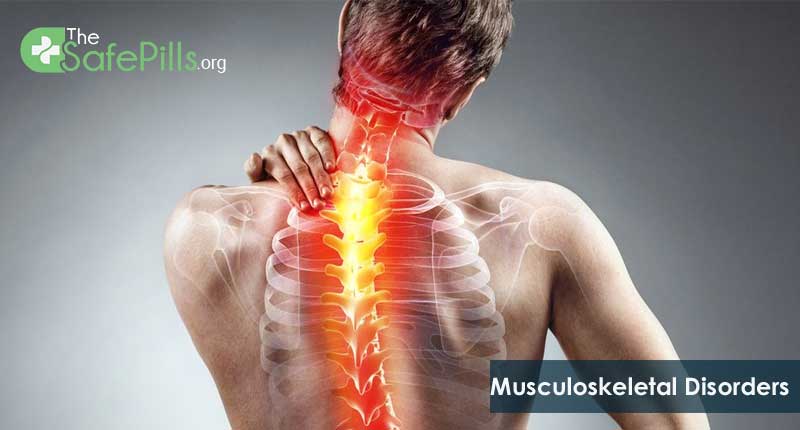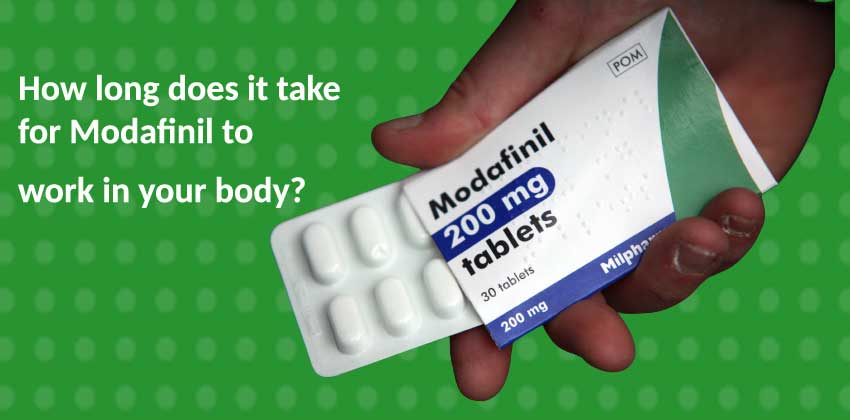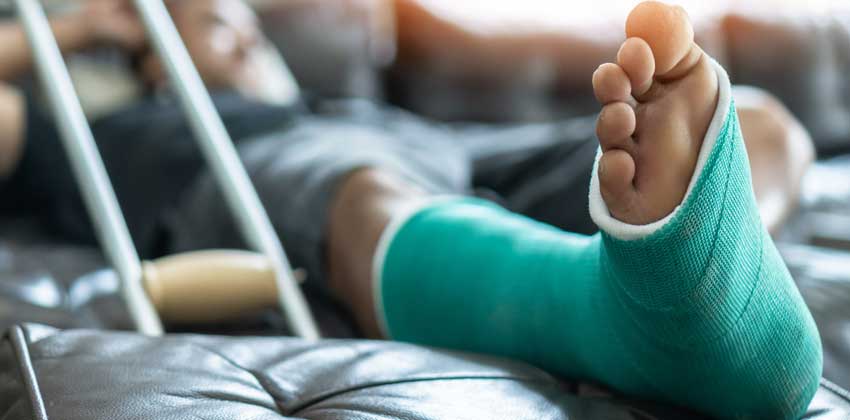-
Choose Store:


- Track Your Order
- My Account
- My Wishlist
- Log In
Musculoskeletal Disorders: Here Is An Inclusive Guide

When we talk about the most prevalent conditions in the workplace, the answer is musculoskeletal disorders or issues.
Due to work-related injuries, every year several people report the problem of musculoskeletal disorders to the doctors.
Musculoskeletal disorders are conditions that can harm your joints, muscles, and bones.
With time, MSDs have become common, and their risk increases due to age and sedentary lifestyles.
Depending on individuals, the seriousness of musculoskeletal disorders can differ.
By Musculoskeletal disorders, what do you mean?
When we talk about musculoskeletal problems, repetitive motion injuries or repetitive strain injuries are a few other names
This medical problem often has an influence on your tendons, ligaments, muscles, and nerves.
Along with this, you will also experience some effects on the functional movements of your body.
Remember musculoskeletal problems can impact other components of your musculoskeletal system.
MSDs usually occur out of the common movements that will not cause pain in daily chores but becomes risky when repeated continuously.
Holding, bending, straightening, twisting, gripping, or reaching are a few examples of these motions that you must know.
Musculoskeletal disorders mainly include:
- Tendinitis
- Osteoarthritis
- Rheumatoid arthritis
- Carpal tunnel syndrome
- Bone fractures
- Fibromyalgia
Musculoskeletal problems have spread over time and being older makes them more likely.
However, the seriousness of MSDs can differ. In certain cases, they start causing pain & discomfort that affect your regular activities.
Early diagnosis and therapy are important if you wish to improve musculoskeletal diseases and reduce your discomfort.
What are the most common signs and symptoms of musculoskeletal conditions?
The following signs and symptoms can be present in patients with musculoskeletal disorders:
- Dull aches
- Recurrent pain
- Swelling
- Stiff joints
The symptoms of musculoskeletal disorders are responsible for affecting some of the major areas of your musculoskeletal system:
- Wrists
- Neck
- Hips
- Shoulders
- Back
- Feet
- Legs
- Knees
What makes musculoskeletal diseases more likely to occur?
The following factors increase your risk of developing musculoskeletal disorders:
- Activity level
- Age
- Family history
- Occupation
- Lifestyle
In addition, some activities might damage your musculoskeletal system and lead to musculoskeletal problems. These include:
- Following a poor posture every day at work
- Sitting in a similar position in your system every day
- Involving in repetitive motions
- Lifting heavy weights
How are musculoskeletal problems diagnosed?
Getting the proper diagnosis is necessary as the treatment strategy for musculoskeletal diseases depends upon the underlying causes of your symptoms.
If you see any signs of musculoskeletal issues, call the doctor right away to schedule an appointment.
In order to properly diagnose your ailment, the doctor will first do some specific physical examinations.
The doctor will check you for:
- Muscle weakness
- Pain
- Swelling
- Redness
- Muscle atrophy
Apart from this, the doctor can also test your reflexes because they might reveal nerve damage.
The doctor will recommend some imaging tests like MRI scans or X-rays. Such kinds of tests are helpful in examining your soft tissues as well as bones.
A few vital blood tests might also be done by the doctor to check for rheumatic disorders such as RA.
How are musculoskeletal conditions treated?
The doctor will select the best course of action based on the underlying cause of your musculoskeletal discomfort.
Here are some common treatments which doctors might suggest to you:
- Acupuncture
- Pain relievers like Tapentadol or Tramadol
- Chiropractic adjustment
- Occupational therapy
- Therapeutic massage
- Physical therapy
- Steroid injections
- Splints
The treatments can aid you learn how to manage your pain & uneasiness effectively.
Additionally, you will be able to maintain strength and range of motion as well as alter your regular activities as necessary.
Can you treat musculoskeletal pain or disorder at home?
To manage the pain of musculoskeletal at home, the doctor can guide you and recommend some solutions like:
- Stress decreasing methods
- Hot and cold therapy
- Stretching exercises
- Over-the-counter pain reliever pills
- Firming and conditioning exercises
Before trying any of the above points, it is vital to consult the doctor once.
How musculoskeletal disorders can be avoided?
As you become older, your likelihood of developing musculoskeletal diseases also rises.
This is due to the natural weakening of your muscles, bones, and joints as you age.
But this does not indicate that you cannot avoid your musculoskeletal disorders.
By taking good care of your body, you might simply reduce the risk of developing musculoskeletal illnesses.
It’s high time to develop some healthy lifestyle habits now and involve in some healthy activities.
Your muscles, joints, and bones can remain in good condition with daily stretching and strengthening activities.
Try completing your regular activities in safe ways without affecting your body.
To avoid back pain, you must maintain the right posture while sitting, sleeping, and walking.
When picking up any kind of heavy objects, try to keep your repetitive motions less.
What circumstances can increase your chance to suffer from musculoskeletal pain?
Your possibility of undergoing musculoskeletal discomfort is raised by various conditions, such as:
Arthritis
Arthritis is responsible for causing chronic joint inflammation. Many arthritis sufferers experience endure joint pain & stiffness frequently.
Fibromyalgia
An ongoing condition known as fibromyalgia causes both muscle pain and weariness.
Fibromyalgia patients experience discomfort in their muscles, ligaments, or tendons frequently.
Tunnel syndromes
Some conditions cause pinched nerves or nerve density.
carpal tunnel syndrome, tarsal tunnel syndrome, and cubital tunnel syndrome are a few
Carpal tunnel syndrome, tarsal tunnel syndrome, and cubital tunnel syndrome are a few instances of tunnel syndromes.
Be careful since these complications frequently result from overuse injuries.
Musculoskeletal disorders cause irritation and interrupt your regular activities.
Therefore, if you are diagnosed with musculoskeletal disorders, don’t panic and simply contact the doctor for treatment.






